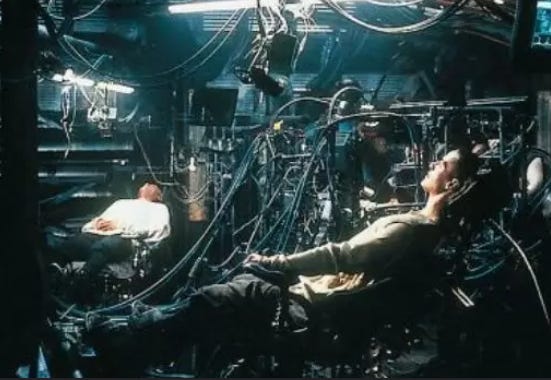Edgenuity: What is it and why does Richmond Public Schools use it?
Critical Reflections on an Ed-Tech Platform
The first time many educators new to Richmond Public Schools will hear the superintendent speak is at RPS New Teacher Orientation. The superintendent will deliver a powerful message about leading with love. He will ask teachers to teach their students with the same love and dedication that they would give to their own flesh and blood. It is a powerful idea that could really change what school looks like for so many students.
Now imagine a school system where students do not engage with teachers in their classrooms, but instead watch prerecorded videos and complete assignments for hours on end. That school system and those classrooms are here through the use of Edgenuity in Richmond Public Schools.
Edgenuity is an online, self-paced learning platform most often used for high school students needing credit recovery. Credit recovery is a situation where a student needs to retake a course to meet their graduation requirements. While attempting the course again with a different teacher is an option, students who need to retake multiple classes are often warehoused in Edgenuity during the regular school year and/or summer school. The program is also used in Secondary Success Center for dropout recovery, Thrive Academy for students that are overaged and undercredited, and for several other alternative programs.
How students engage in Edgenuity differs slightly from class to class or program to program, but it is more or less the same. As an example, during summer school, students complete a course on Edgenuity to earn a credit for a course that they did not pass during the regular school year. The classes are framed as 50% Edgenuity and 50% teacher-led instruction, but in practice they often become 100% Edgenuity. This is because if students do not complete the Edgenuity coursework, even if they participate in the classroom instruction, they fail the course. Because of this requirement, many of the classes move towards emphasizing Edgenuity. Some students spend an entire three and a half hour period during summer school on their computer completing Edgenuity modules.
In order to complete an Edgenuity course, students must take a pre-test for each lesson. If they pass the pre-test, they can skip the lesson and move on. If they fail, they must then click through video after video in order to get to their graded assignments. They then have to pass a quiz at the end of the lesson to proceed. Edgenuity often gives students a second chance on every test and quiz so students have a higher probability of passing than on a typical test, and students often take advantage of this by guessing on questions. On the social media site Reddit, there are several posts about the ineffectiveness of Edgenuity. Many of these posts explain how easy it is to cheat on Edgenuity.
Many of the answers for Edgenuity courses can be found online on sites such as Quizlet. Some students have also used artificial intelligence (AI) to cheat in their courses. Edgenuity uses AI to detect students using AI and has features that lock browsers, but students can find ways to circumvent Edgenuity’s system.
Some students benefit from this learning model as it allows them to advance and review material based on their individual needs. It also differentiates by offering translated material for English learners, though special education teachers have noted that the content does not effectively differentiate for students with IEPs.
One student explained they enjoyed Edgenuity because they could drive their own learning. Another student said they liked it because it allowed them to move through a course quickly so they could graduate on time. However, students have indicated that they don’t feel like they’re learning as much as they would if they were taught by a real teacher. These examples are anecdotal, but they mirror negative feedback that Edgenuity received including from a NBC News article that details parent and student dissatisfaction.
While teachers are able to assist students with Edgenuity, the online platform feels more like a system for monitoring than teaching. It is redundant and less engaging. RPS is paying Edgenuity, a private company, to shuffle students through a class and RPS teachers to monitor them through the process. Investing in Edgenuity outsources and privatizes public education when we could be investing in RPS teachers.
RPS leaders argue that Edgenuity has helped hundreds of students graduate. It is the fastest way for students to earn credits and can facilitate course completion in a way that a traditional class cannot. But does this mean students are actually learning, and is this how we want education to look?
What can RPS do instead?
RPS should survey students and staff about the effectiveness and quality of Edgenuity. An independent organization such as Virginia Commonwealth University's Metropolitan Educational Research Consortium could conduct a study.
During the 2024-2025 school year, RPS paid Imagine Learning, the parent company for Edgenuity, over $400,000. This amount could have been invested in hiring more teachers, tutors, or increasing the wages for teachers to participate in credit recovery programs. RPS could use money that would go towards Edgenuity to pay teachers to create content for credit recovery, as many teachers already have curriculum resources.
Do we want our classrooms and students to be computer-based learning centers with teachers monitoring progress completion or places where students and teachers build meaningful connections?
Edgenuity has been a pathway for students to complete courses towards graduation and drive their learning. There might be a place for it and programs like it in our educational landscape, but it should be the exception. Edgenuity has passed being an exception and has moved to prevalence. The more RPS comes to rely on it, the more our school system depends on it. Our dependence and use of Edgenuity raises serious concerns on the outsourcing and privatization of public education.
Plopping students in front of computer screens for hours at a time to watch videos and complete assignments independently is not teaching with love. We should invest in public education, not private companies. We should strive to offer education that reflects the superintendent’s vision of teaching with love. Our education system would be so much more meaningful for our students and teachers if we did so. After all, we owe it to them to provide a model that we would want our own flesh and blood to have.
References:
"Edgenuity's software wasn't meant for a pandemic. That didn't stop some school districts." NBC News, 18 Feb. 2021.
EdPolicyInCA, edpolicyinca.org/news/edgenuitys-software-wasnt-meant-pandemic-didnt-stop-some-school-districts.



